Barbados: A Walk through History (Part 11)
Section 7 The Path to Abolishing Slavery
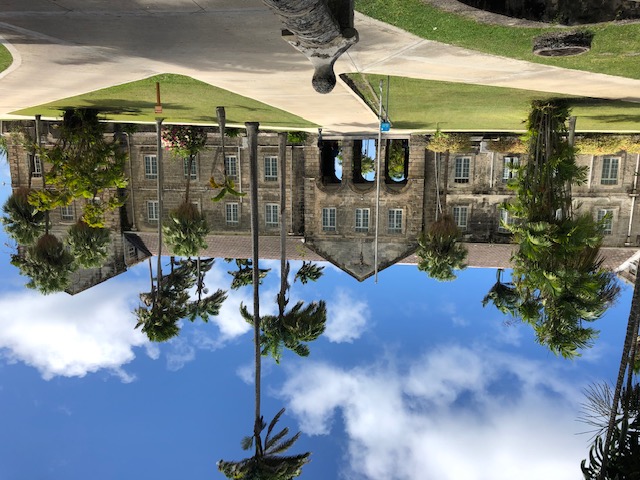
(Codrington College)
Among International days designated by the United Nations, March 25th is the International Day of Remembrance of the Victims of Slavery and the Transatlantic Slave Trade.
Barbados, together with member countries of the Caribbean Community (Caricom) (note 1), drafted the UN General Assembly Resolution in 2007 in order to establish this international day. These Caribbean nations share one thing in common; their history as slave-labor countries during the transatlantic slave trade.
The resolution was passed unanimously on December 17th the same year at the 62nd UN General Assembly in New York. Alongside designating it an International Day, this resolution requested the UN Secretary General to establish an educational program in collaboration with UNESCO to inculcate future generations with the tragedies and lessons of the transatlantic slave trade, dating from the 15th to 19th centuries (note 2).
On March 25th 2008, the first regular anniversary event to mark this international day was held at the UN Economic and Social Council. The chairman who presided over the event of the day was then-Barbados Ambassador to the UN, Christopher Hackett.
Why was the International Day of Remembrance of the Victims of Slavery and the Transatlantic Slave Trade set on March 25th? On this date in 1807, the British parliament passed an act abolishing the slave trade throughout the kingdom. It was undoubtedly an epoch-making moment in history.
However, the largest slave uprising in Barbados’ history, the previously-mentioned Bussa’s Rebellion, took place in 1816, nine years after the abolishment of the slave trade in the UK and its colonies. It is obvious that even with a change in law, there was no dramatic change in the situation for those enslaved.
The act only outlawed the slave trade, not the slavery system itself, which was not outlawed until 1833. In fact, there were voices of common dissent among the white ruling class in Barbados that the bill passed in the suzerain’s parliament was not considerate of their situation and only made the slaves harder to control.
****************************************************************
The Process of Getting the Slave Trade Act Passed in the UK
The slavery system in Barbados colony and its suzerain’s internal affairs and legislation were needless to say closely interlocked.
George Fox (1624-1691), the founder of the Religious Society of Friends (commonly known as the Quakers) was one of the forerunners in objecting to the English transatlantic slave trade and the inhumane practice of slavery.
The Quakers, known for their simple lifestyle and belief in egalitarianism, have a population of roughly 600,000 and are located mainly in the US and the UK. In 1671, Fox, in order to promote the Quaker’s beliefs, spent a period of time in Barbados.
Fox’s time on the island was spent advocating for the improvement of the Black slaves’ treatment and conditions, preaching his belief that the Gospel should be taught to slaves, and that they should be freed at some point.
However, Fox was barking up the wrong tree in his pleas for the enslaved population. It was the second half of the 17th century when sugar production on the island had just taken off, and slave labor was at peak demand. The white ruling class wanted nothing to do with Fox’s unfathomable ideas on freedom or even improved living conditions for their slaves.
The majority of conservative plantation owners in Barbados belonged to the Church of England. The Quaker’s beliefs were starting to be regarded as heresy by them. Fox’s discourse on slaves only rubbed them the wrong way, labeling him as a dangerous dissenter who was fanning the flames of a slave revolt. As a result, his missionary activities on the island met with various obstacles, and in the end, he was unable to continue and forced to leave the island.
Although Fox was promoting the amelioration in treatment of the slaves, there were many Quakers in England and in the North American colonies who themselves owned slaves. There were persistent voices of support of the slave system even from within the upper ranks of the Quakers. Fox’s conviction that the slave system was evil did not take root within the Quakers’ doctrine until much later.
It was not until nearly 100 years later after Fox’s visit to Barbados that the Quakers formally ousted slave owners and those connected with the slave trade from their society in the 1760’s.
Just around that time, another movement separate from the Quakers was beginning to take form.
One day in 1765, an injured, bloodied Black man was found lying on a street in London by a lower-ranking civil service official named Granville Sharp, who took him to the hospital for treatment. The Black man turned out to be a slave named Jonathan Strong who was taken from Barbados to England by his “owner”. It is revealed later that his “owner”, David Lisle, who was unhappy with Strong’s work productivity, severely beat him and left him on the street.
It took several months for Strong to recover from his injuries. During this time, Sharp and fellow sympathizers paid for his hospital fees and other necessities, taking good care of Strong.
However, recovered Strong had the misfortune of being found by Lisle, who caught him and tried to sell him off to a Jamaican slave trader. Sharp caught wind of this and petitioned the court claiming that Strong was no longer a slave after having been brought to England from Barbados.
After a court battle lasting several years, Strong was freed from slavery. But the authorities of London expressed a view that any person with the status of slave who was brought from the West Indies to England was still considered a slave.
This fueled Sharp to further pursue his abolitionist activities on a larger scale.
In 1771 another incident made headlines. James Somerset, a slave brought from the colony of Virginia to London, ran away from his “owner”, Charles Stewart. Somerset was captured by Stewart and imprisoned in a slave ship bound for Jamaica to be sold to a plantation.
Sharp and his group of abolitionists brought the incident to court seeking release of Somerset, claiming the unlawfulness of Somerset’s imprisonment.
The Chief Justice of the Court of King’s Bench was Lord William Murry, the 1st Earl of Mansfield. He ruled that slavery had no basis in English common law, freeing Somerset. Lord Mansfield’s judgement of “Somerset vs. Stewart” became well-known afterward as the judgement that moved the country onto the path to abolish slavery from the aspect of judiciary.
The bill to abolish the slave trade was first taken up in British parliament in 1791. The main figure behind the bill was the Evangelical politician William Wilberforce (1759-1833) who belonged to the House of Commons.
The initial bill was defeated by an overwhelming majority as the plantation owners, land owners, slave ship owners, shipbuilding industry and others who profited from the slave trade were a formidable force in lobbying against the bill.
The pushback was so intense that, for example, Henry Lascelles, a plantation owner in Barbados, claimed that he would “be ready to willingly give up land and properties in order to unseat Wilberforce”, going so far as to running in the same constituency as Wilberforce (however, Lascelles did not succeed and Wilberforce retained his seat in the House of Commons).
Wilberforce, who believed that the inhumane slave trade could not be left alone any longer, repeatedly brought his anti-slave-trade bill to the floor and fought for it without hesitation, no matter how many times it faced rejection by the House.
16 years after the first bill was brought to the floor, on March 25th 1807, the Slave Trade Act, which abolished the slave trade, was finally passed in Parliament.
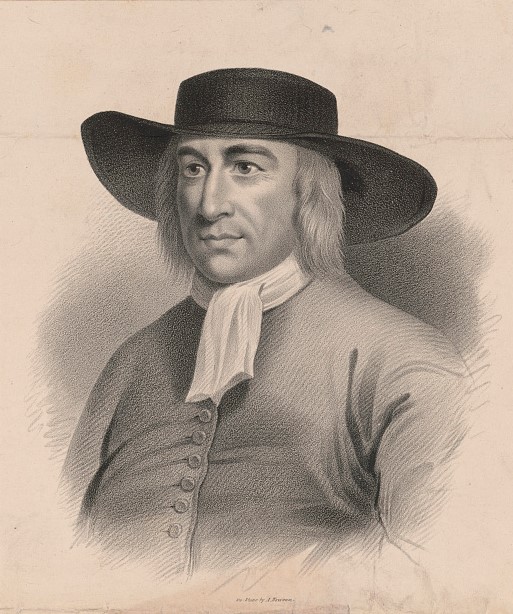
(George Fox)
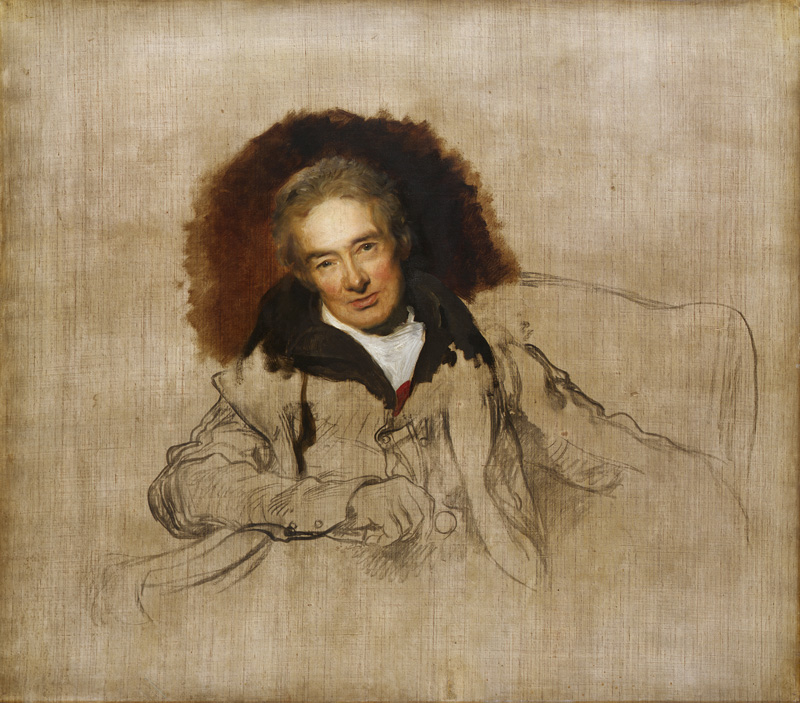
(William Wilberforce)
There were anti-slavery sentiments even on the island of Barbados, which relied heavily on slave labor to cultivate and harvest sugarcane used for making sugar and rum, and exporting them.
One of these was the “Society for the Propagation of the Gospel in Foreign Parts (SPG). The SPG was a missionary organization which was founded by the Church of England and its primary aim was to “promote evangelization of the non-Christian races of the world” (note 3).
The missionary clerics of the SPG started their activities in Barbados to baptize the Black slaves around the beginning of the 18th century. But then, a discrepancy occurred. A number of white Christians realized that abusing the newly converted Black Christians as slaves went against God’s teachings, raising awareness that their words were inconsistent with their actions.
The majority of the white ruling class in Barbados were convinced that “Blacks and whites are different”. They considered the SPG’s activities to be a nuisance. Resistance against the missionary’s teachings was strong, preventing the SPG from making quick progress in Christianizing the enslaved population on the island.
Interestingly, however, a substantial part of the financial sources of the SPG’s activities on the island came from a man who owned huge plantations and hundreds of slaves-a man named Christopher Codrington (1668-1710).
Codrington was born into an extremely wealthy family, inheriting large sugarcane plantations from his father. He was an intellectual who studied at Christ Church, Oxford in England, and a famous book-collector. Simply speaking, he was part of the top elite social class in Barbados at that time.
Codrington was a typical plantocrat and thus he did not openly raise his voice against the slave system. However, he bequeathed a large portion of his fortune to the SPG to be used for Christianizing the poor, non-whites, and enslaved population.
After his death, the SPG used their inherited funds to begin building a school in 1715.
However, this secondary school, named “Codrington Grammar School”, did not open its doors until thirty years after commencement of its construction-in the year 1745.
Why was a secondary school built and not a primary school? Why did such a lengthy time pass until the first students were accepted? My curiosity got the better of me and I delved into the books to try and find an answer.
However, no matter what book I looked in there was nothing of substance on the subject, leaving me puzzled with the lack of information on the subject and my question unanswered. Reading between the lines, however, one can suppose that the conservative class on the island opposed the educational objectives of the school-Christianization and education of the colored and Black slaves-preventing its opening. At the time, grammar schools were only for young white boys, thus Codrington Grammar School had to open in line with the norm of the time.
One can assume that there were multiple conversations between the SPG, who received a large part of Codrington’s wealth, and the island’s ruling conservatives. Although Codrington’s fortune was not used exactly according to his wishes, he is someone to pay attention to in terms of being a representative of the ruling class, yet whose way of thinking was out of step with his time-his ultimate goal was to enhance the welfare of non-whites and slaves in Barbados.
Codrington was alive in the time when the law in colonial Barbados allowed “A fine of 15 pounds for whoever kills a slave”. Even back in England, the abolitionist movement had not yet gained traction and anti-slavery voices were few and far between.
Codrington never married, but he had a relationship with a Black woman named Maudline Morange who bore him a son. William, as he was named, took part of the fortune his father left him after his death and went to Jamaica where he became a plantation owner.
Codrington, under these circumstances, as a large plantation owner who owned numerous slaves himself and was part of Barbados’ leading establishment, was not able to publicly decry the evils of slavery. However, he most likely thought that he could at least leave his vast fortune with the SPG in order for it to be put to good use in their proselytizing activities.
Following his death, Codrington’s body was sent to England and was laid to rest at All Souls Chapel, Oxford. His extensive book collection was donated to All Souls College, and the “Christopher Codrington Library” was built in his namesake. Inside the library stands a life-sized statue of Codrington, giving an idea of his elevated social status even back in England.
Time has passed and it is now 300 years after his death. At the beginning of this century, Codrington’s use of slave labor in accumulating his wealth became problematic. In January 2021 his alma mater was forced to make the decision to erase “Codrington” from the library’s name. In exchange, a plaque stating “in memory of those who worked in slavery on the Codrington plantations in the West Indies” was installed at the library’s entrance.
On the other hand, Codrington Grammar School in Barbados, built at his bequest in the 18th century, changed its policies in the meantime and opened its doors to non-white students and became an Anglican theological institution. Named Codrington College, it is the oldest theological college among all of the British colonies in the Western Hemisphere.
After changing hands several times, Codrington College is currently affiliated with the University of the West Indies Cave Hill Campus as its theological department (note 4). The college’s impressive buildings and serene campus grounds overlooking the Atlantic Ocean from on top of a hill of the eastern coast of St. John’ Parish is, I believe, one of the most beautiful spots on the island (note 5).
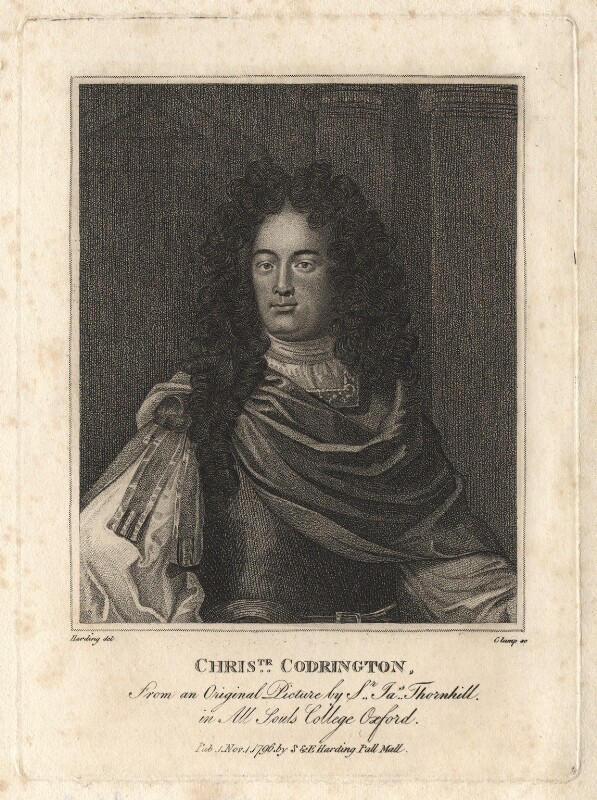
(Christopher Codrington)
Following in Codrington’s footsteps on the island was a man named John Gay Alleyne (1724-1801).
Just like Codrington, Alleyne was a wealthy plantation owner. He was what one might call a classic example of the white ruling class on the island. He was a long-standing member of the Barbados House of Assembly and climbed his way up to its Speaker. However, Alleyne’s enlightened views on society would be further influenced by the growing rhetoric of skeptics of the slave system in England.
Alleyne used his personal funds to build a seminary in St. Andrew’s parish in the north-eastern part of the island specifically for the poor white class but later also for free mixed-race boys (in most cases, white father and Black mother) in order to improve their treatment within society (note 6).
Alleyne’s charitable endeavors eventually expanded to encompass the children of Black slaves. The conservative majority, however, did not take kindly to Alleyne’s work and criticism grew. In response, Alleyne gave a speech at the House of Assembly where he stated that slavery was “an unhappy sight which leaves an immense debt upon us to clear the obligation of human nature”.
After his first wife Cristen’s death, he remarried his 40-year-younger cousin Jane at the age of 62 and they had two sons and five daughters together. A very energetic man, indeed. He was also known for his superb business capabilities. In addition to managing his plantation and taking part in the Barbados House of Assembly, he also helped his friend John Sober with running his rum distillery “Mount Gilboa Distillery”, and is accredited to greatly improving its financial condition.
In appreciation for his help, Sober, who held an admiration for Alleyne’s personality, renamed his distillery “Mount Gay Distillery” after Alleyne’s death. Mount Gay rum continues to be produced in Barbados to this day as the world’s oldest rum brand.
Looking at the footsteps of Alleyne and the previously mentioned Codrington, one can discern that even though plantation owners used slave labor, not all of them were cold-hearted rapacious men. One can assume that the treatment of the enslaved population on Codrington and Alleyne’s plantations was better than that of other plantations.
On the other hand, there is also the opinion that “Codrington and Alleyne, who themselves used slave labor to gain their fortune while calling for better treatment of slaves, are nothing but hypocrites”.
However, at that time, Barbados was a monoculture economy relying solely on the sugar industry to survive; this was only possible due to slave labor brought in from the slave trade. In order to increase profits, it became the norm to exploit and abuse slaves, and the predominate opinion that it was outrageous to teach slaves to read and write, allowing them any education, had taken a strong hold within white society.
In this day and age, Codrington and Alleyne’s deeds may be considered merely within the realm of philanthropic. However, it was too early for them to do any more than they had done. Not to mention that the intellectual middle class with Enlightenment-rooted ideas of freedom, equality, human rights, etcetera was almost non-existent on this small, far-away island of Barbados, whose only income source was the sugarcane crop.
If the two men had, hypothetically, given up their plantations and propagated the idea of abolishment of slavery, it is almost certain that no one would have done anything to help them. They did what they could and worked with sincerity in light of their situation and the time period in which they were alive.
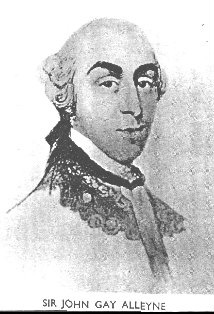
(John Gay Alleyne)
(Note 1) CARICOM (Caribbean Community) is a regional organization and was established in 1973 under the Treaty of Chaguaramas. The original members are Barbados, Guyana, Jamaica, and Trinidad and Tobago. Membership has increased, and currently 14 countries and one region are members. CARICOM’s primary goal is to integrate the economy within the regions, and to promote cooperation in areas such as diplomatic policies, health and medical, education, cultural, and others.
(Note 2) In addition to International Day of Remembrance of the Victims of Slavery and the Transatlantic Slave Trade, in 1998 UNESCO designated August 23rd as the International Day for the Remembrance of the Slave Trade and its Abolition. August 23rd was chosen for the reason that it was this day in 1791 when a slave uprising started in the French colony of Saint-Domingue, which would later lead to its independence and creation of Haiti.
(Note 3) The SPG and their goal of “evangelization of the non-Christian races of the world” also made its way to Meiji Japan in the late 1800s, with missionaries in Tokyo and Kobe.
(Note 4) The University of the West Indies (UWI), originally established in 1948, has evolved into a public university jointly run by 18 English-speaking countries and regions in the West Indies. Faculties and research institutions are spread out across the multiple campuses which include Cave Hill in Barbados, Mona in Jamaica, St. Augustine in Trinidad and Tobago, and the Five Islands campus in Antigua and Barbuda.
(Note 5) Currently, there is a private international school in Barbados named “Codrington School”, which some children of Japanese residents attend. However, this school was originally established in 1917 as the “Codrington Boarding School” and is unrelated to Codrington College.
(Note 6) The seminary which Alleyne founded would later transform into a secondary educational institution named the Alleyne School. In 1947 it became the first co-educational public school on the island.
(This column reflects the personal opinions of the author and not the opinions of the Ministry of Foreign Affairs of Japan)
WHAT'S NEW
- 2025.8.28 UPDATE
PROJECTS
"Barbados A Walk Through History Part 16"
- 2025.5.15 UPDATE
EVENTS
"417th Lecture Meeting Regarding Global Issues"
- 2025.4.17 UPDATE
EVENTS
"416th Lecture Meeting Regarding Global Issues"
- 2025.3.13 UPDATE
EVENTS
"415th Lecture Meeting Regarding Global Issues"
- 2025.2.20 UPDATE
EVENTS
"414th Lecture Meeting Regarding Global Issues"
- 2025.2.12 UPDATE
PROJECTS
"Barbados A Walk Through History Part 15"
- 2025.1.16 UPDATE
EVENTS
"413th Lecture Meeting Regarding Global Issues"
- 2024.12.19 UPDATE
EVENTS
"412th Lecture Meeting Regarding Global Issues"
- 2024.12.4 UPDATE
PROJECTS
"Barbados A Walk Through History Part 14"




